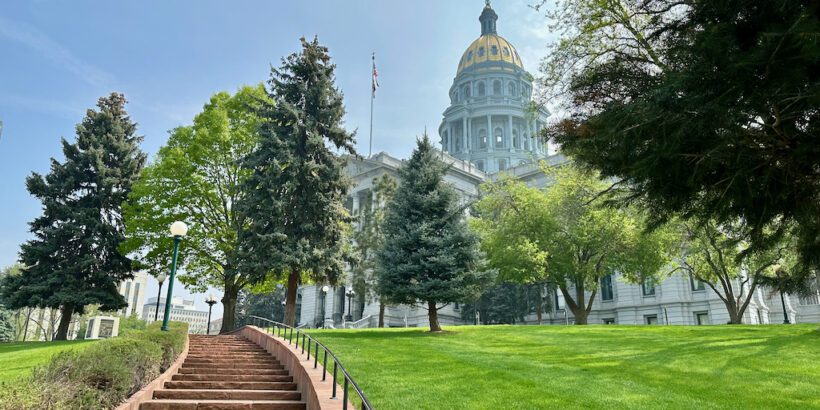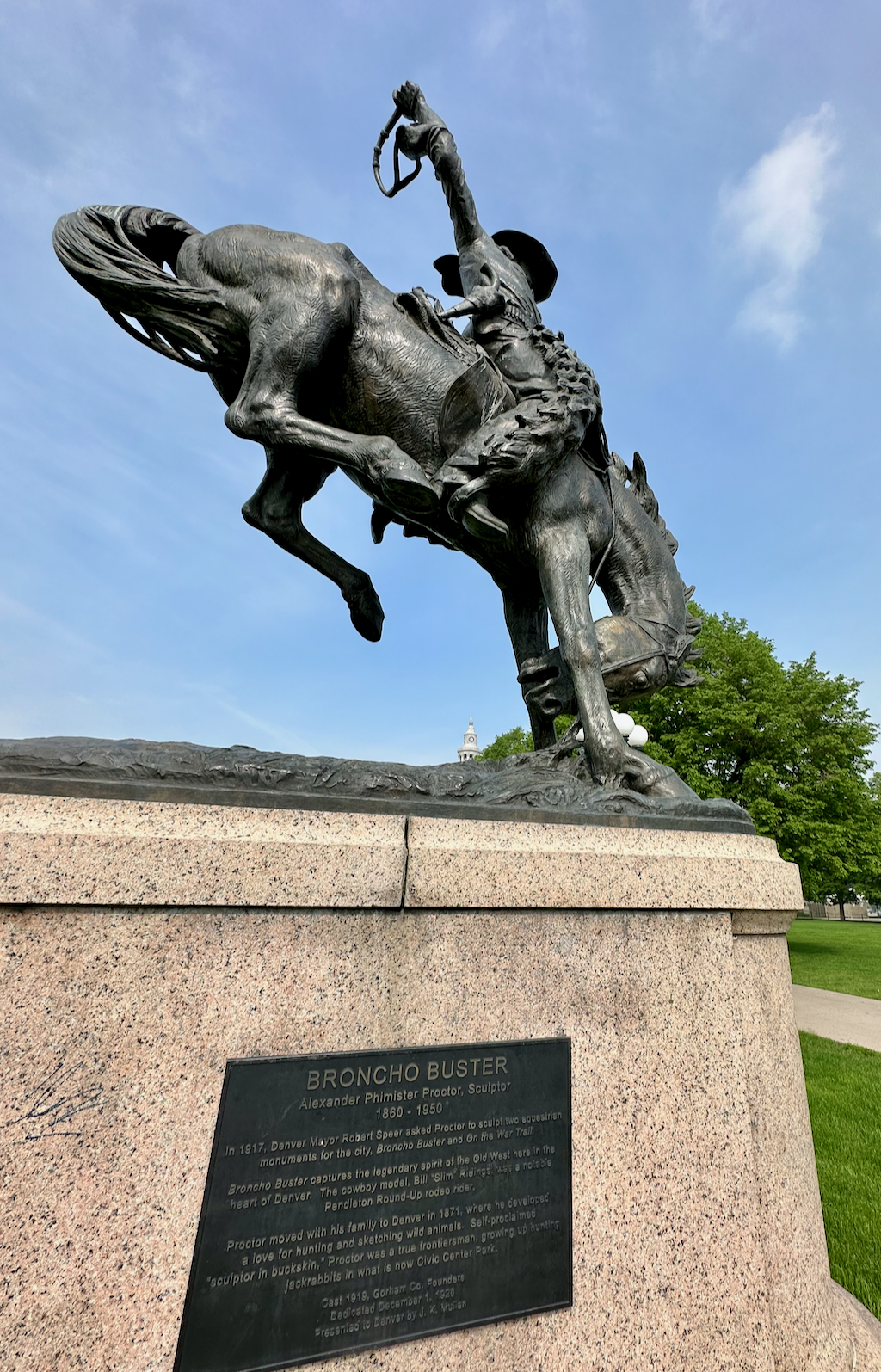Denver’s Civic Center Park offers a plethora of sites to see, making it an ideal location for a leisurely stroll or a fun afternoon of exploration.
You can easily spend a few hours admiring the captivating public art, remarkable architecture, expansive green spaces, and significant historical sites.
In this article, allow me to guide you through the prominent landmarks, providing valuable insights to enhance your appreciation of the surroundings. I’ll break down all of the major highlights so that you won’t miss anything and can just focus on soaking everything in.
Table of Contents
What is Civic Center Park?
Civic Center Park is a prominent urban park located in the heart of Downtown Denver, Colorado, that serves as a focal point for civic and cultural activities.
Listed on the National Register of Historic Places, the park spans approximately 12.4 acres and is surrounded by historic government buildings, including the Colorado State Capitol and the Denver City and County Building.
It’s an ideal destination for visitors to engage in sightseeing and exploration, and its close proximity to downtown Denver also serves as a convenient starting point for exploring downtown attractions.
Tip: if you’re looking for a park to get some good exercise in, consider checking out Confluence Park.
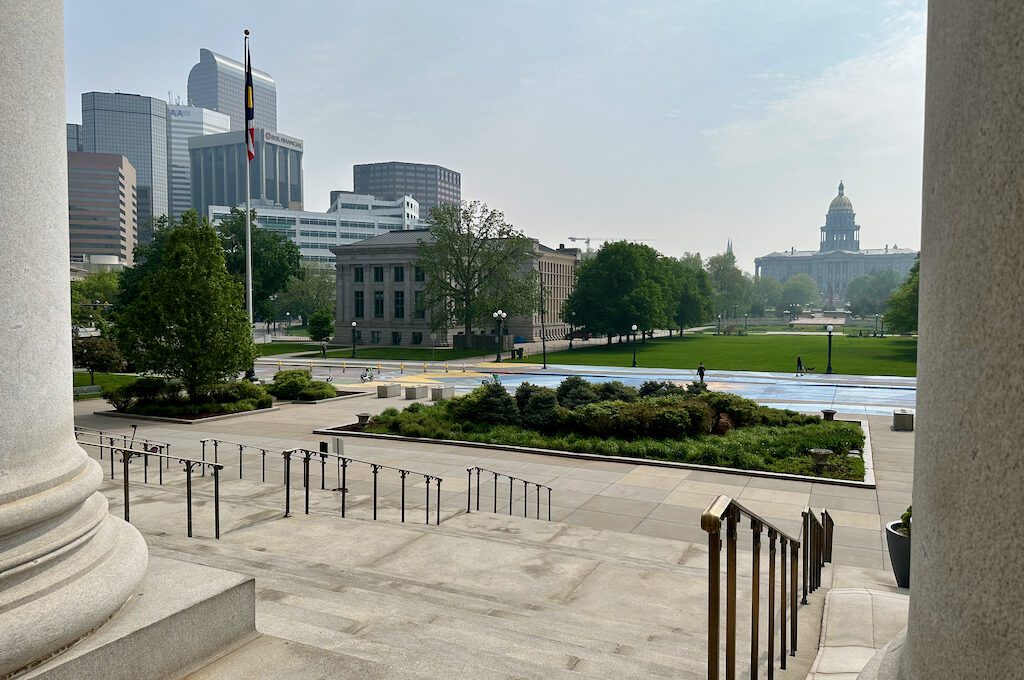
How to get to Civic Center Park
Civic Center Park sits merely one block away from RTD’s Civic Center Station, ensuring convenient access via the 16th Street FREE MallRide and Light Rail.
Moreover, the park is conveniently served by several RTD bus routes, including 0, 15, 15L, 16, and 52, which make stops in close proximity.
If you’re coming in with a vehicle, recommended parking garages include: Denver Post Building Garage and Cultural Center Complex Garage. There is some street parking available around the perimeter of the park but it is limited in availability.
Personally, we like to park at the Cultural Center Complex Garage because it’s so easy to find a spot and they also have EV parking.
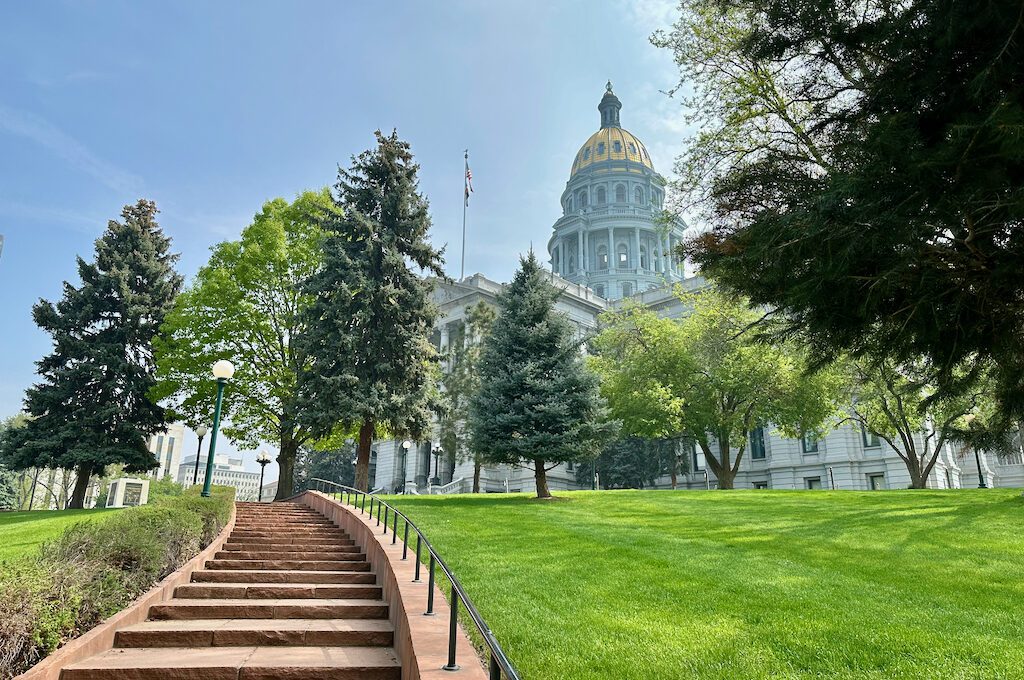
Visiting Civic Center Park
One of the captivating aspects of Civic Center Park is its remarkable architecture.
The park is surrounded by a collection of historic buildings, many over a century old, that exude grandeur and elegance. These architectural gems were inspired by the City Beautiful movement, a nationwide initiative that sought to create visually stunning and harmonious urban spaces.
In Denver, Mayor Robert Speer played a pivotal role in championing this movement from the time of his election in 1904 until his passing in 1918.
Speer held the belief that the City Beautiful movement would serve as a platform to not only highlight Denver’s allure but also entice tourists, fitness enthusiasts, and potential residents. This, in turn, would cultivate a sense of civic pride and guarantee the city’s prosperity.
We entered from the side of the Denver Art Museum which took us directly through the The Greek Amphitheater. Erected in the year 1919, this architectural gem was born from the collective vision of Denver’s esteemed architects Marean & Norton, in collaboration with the renowned Chicago architect Edward H. Bennet.
As we stepped foot into the theatre’s embrace, we found ourselves mid-stage, amid the backdrop of the 210-foot-long semicircular “Colonnade of Civic Benefactors.” It’s a grand and timeless structure and on the inside it boasts intricate pioneer-themed murals, masterfully crafted by artist Allen Tupper True.
Upon completion in 1919, the Greek Theatre began to host regular vaudeville performances, concerts and other entertainment and even today concerts are still put on here.
As you stroll about the structure, you’ll surely be captivated by its commanding presence.
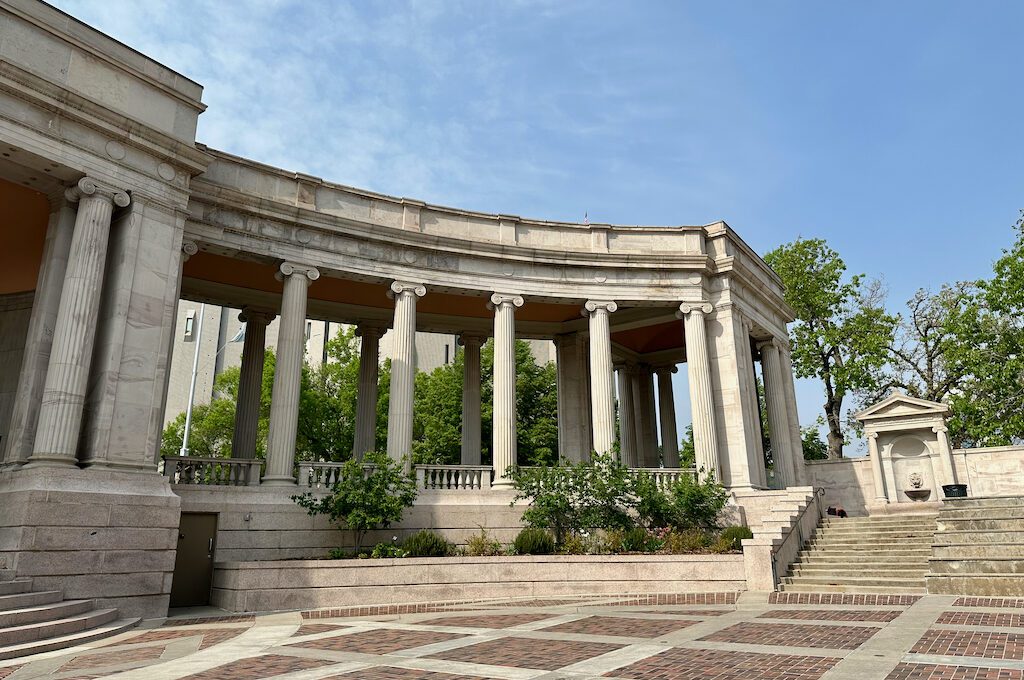
After we left the amphitheater, we were immediately greeted by two additional statues, each with a tale to tell.
The first among them was the Bronco Buster Statue, a captivating tribute to Denver’s Wild West heritage. Crafted from bronze, this remarkable sculpture portrays a fearless cowboy engaged in the daring act of “bronco busting,” skillfully taming a wild horse for saddle riding.
Interestingly, the creation of this iconic piece carries a story entwined with the spirit of the Wild West itself. The model for the statue, Slim Ridings, found himself in the clutches of justice for horse theft. The artist behind the sculpture, Alexander Phimster Proctor, needed to finish the job so he was compelled to offer bail on behalf of Ridings in order to ensure the completion of the modeling job.
Standing near the Bronco Buster Statue, we encountered another well-done sculpture that commanded our attention: “On the War Trail.” This captivating work, also crafted by the talented hands of Alexander Phimster Proctor, serves as a tribute to the indigenous peoples of Colorado.
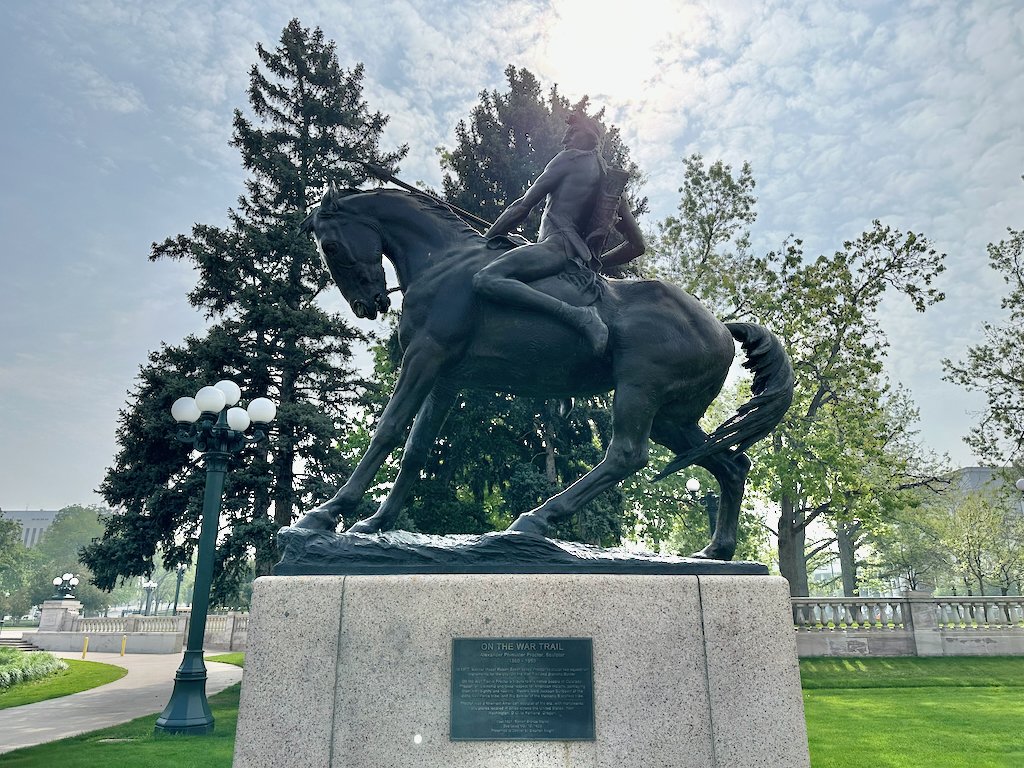
Within the park, we were delighted to discover the picturesque and serene flowerbeds, located at its center. These meticulously curated flowerbeds showcase 25,000 square feet of blooming flowers although some were still in the process of getting ready for the summer.
As we strolled through the park, we also couldn’t help but to appreciate vistas of the Denver skyline.
Tip: You can do your own self guided audio tour by listening to the tracks here.
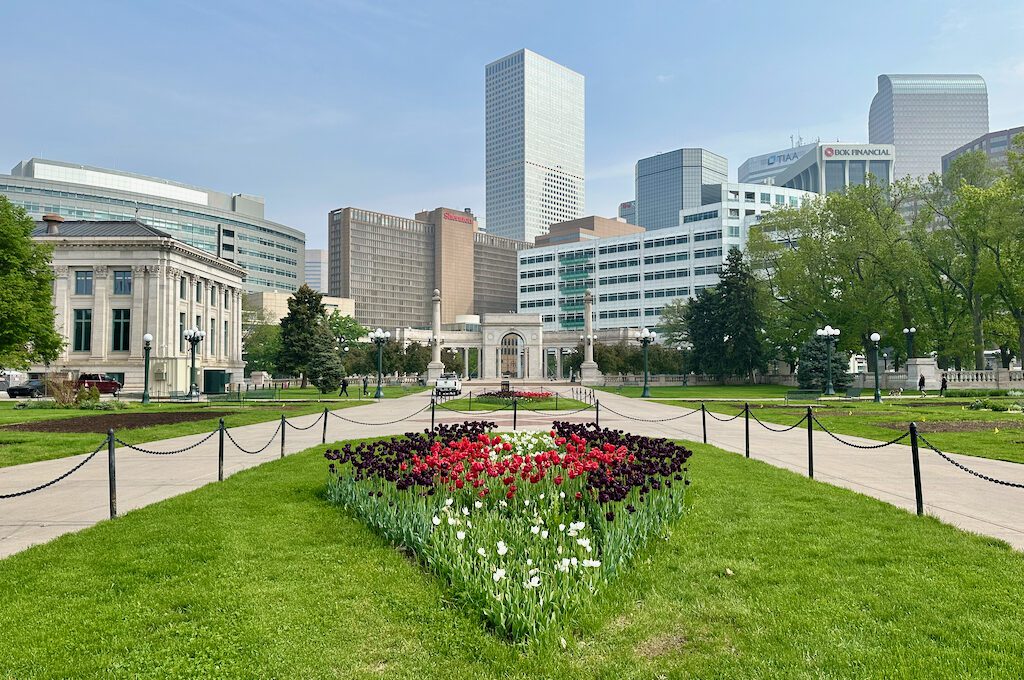
Continuing our journey, a straightforward path led us to the Voorhies Memorial, an architectural gem constructed in 1919. This urban gateway held such significance that it necessitated the rerouting of Colfax Avenue.
Designed by the esteemed Denver architects Fisher & Fisher, the Voorhies Memorial stands as a testament to their vision and skill.
As you approach the memorial, you’ll be greeted by the Voorhies Memorial Seal Pond, featuring a magnificent 60-foot by 30-foot basin adorned with two bronze sea lions being joyfully ridden by cherubs.
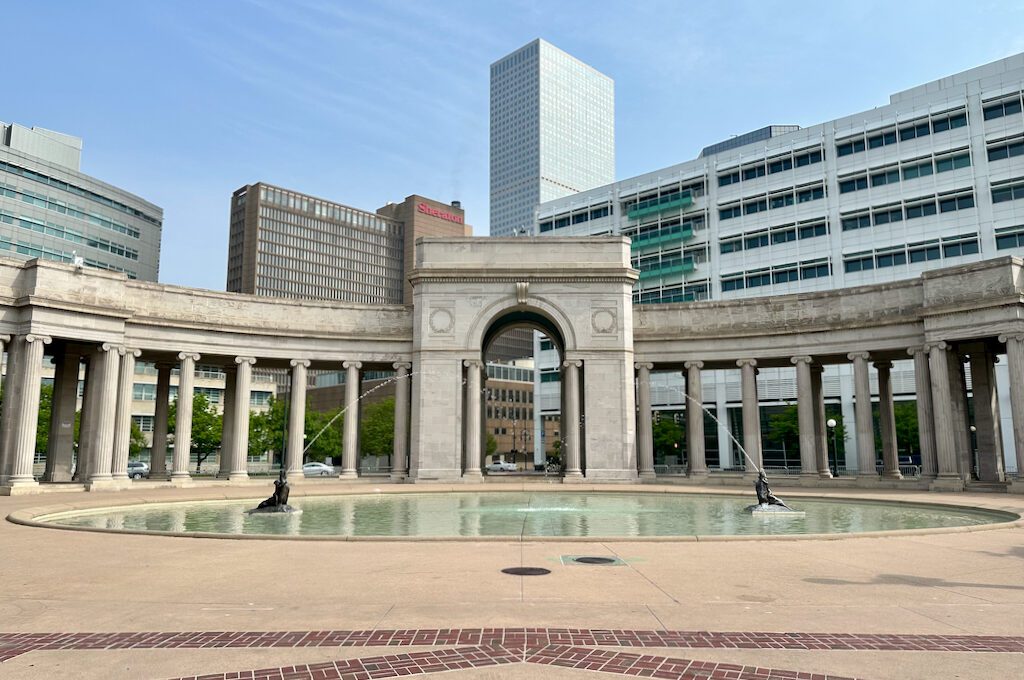
Adding to its allure, the memorial boasts captivating murals of a pair of elk and a pair of buffalo also created by Allen True. True also has murals adorning the State Capitol Rotunda and the iconic Brown Palace’s lobby.
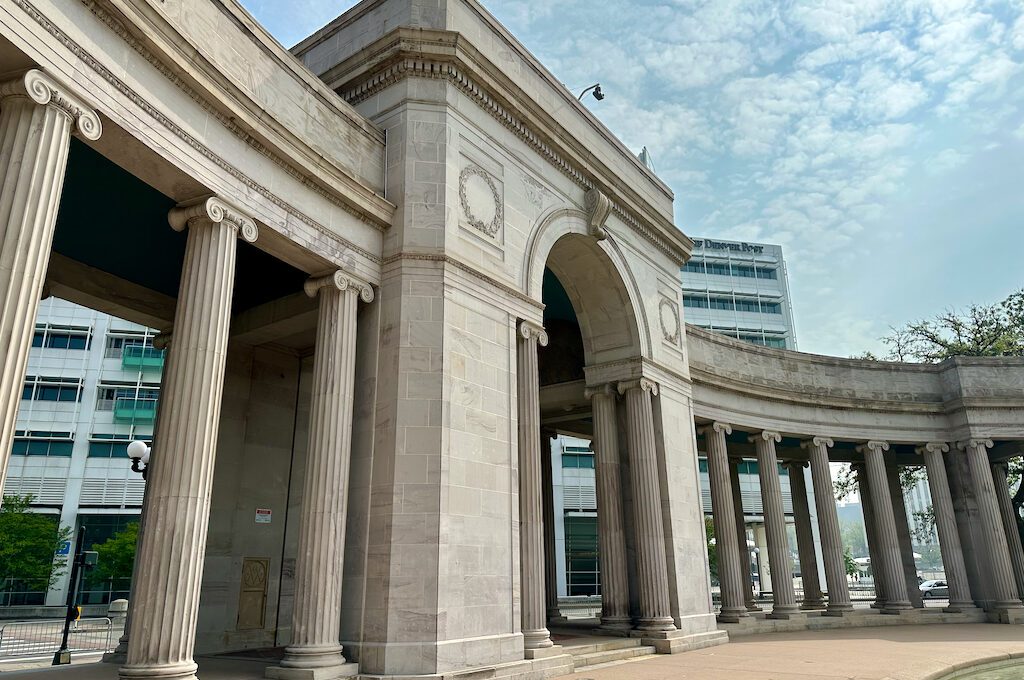
Our journey led us to the magnificent McNichols Civic Center Building, also known as The Carnegie Library, a significant landmark that holds the distinction of being the first structure erected on the new Civic Center site. Erected in 1909, this architectural gem stands as a testament to the rich history and cultural heritage of the area.
Designed in the Greek Revival style by the talented architect Albert Ross of New York, The Carnegie Library embodies the grandeur and elegance associated with neoclassical aesthetics. Its stately presence pays homage to the principles of order and harmony, embraced by the City Beautiful movement.
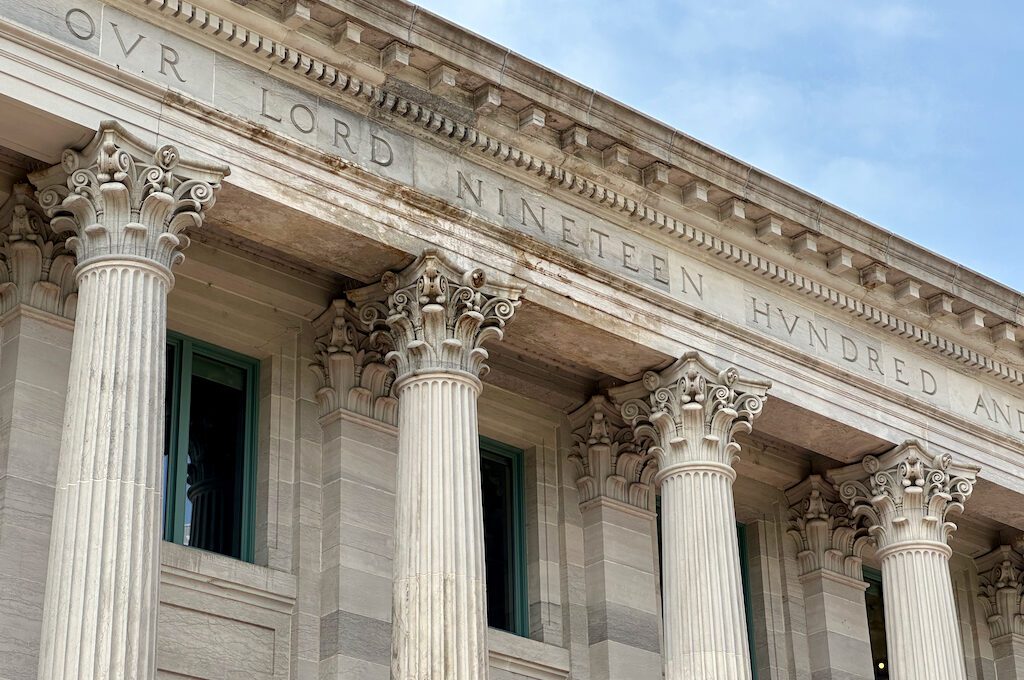
We then took a turn west to check out the Denver City and County Building. Designed in the neoclassical style by the renowned architect Frederick Sterner and built in 1932, the building showcases a Greek Revival architectural style and was kept low in height to preserve the Capitol building’s view of mountains.
One striking feature that caught our attention was the vibrant crosswalk mural in front of the building. The colorful mural, known as “Interwoven,” adds a bold splash of color to the otherwise grand and stately facade of the building.
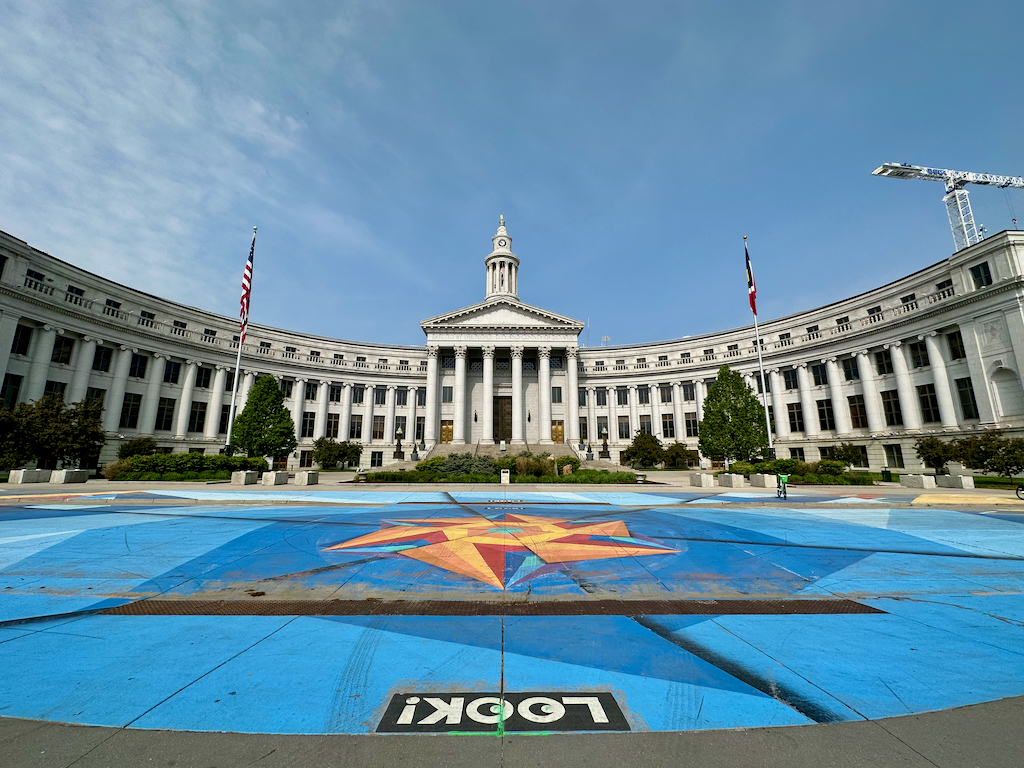
Our exploration then took us further east, until we reached the intersection of Colfax and Broadway, a crossroads that holds a significant piece of Denver’s history: the Pioneer Monument.
A few days before our arrival at the intersection of Colfax and Broadway, we had the opportunity to explore the remarkable Four Mile House, an iconic structure that holds the distinction of being the oldest standing building in Denver. This historic house served as one of the pivotal stopovers for pioneers on their arduous journey to Denver.
Throughout the nearby pioneer trails, similar houses and taverns were marked with names like 4 Mile House, 17 Mile House, and so on. These names were derived from the distance measured from the very intersection we now stood at, adding some cool historical context to our visit.
Regrettably, the presence of barricades around the monuments and sculptures dampened our experience to some extent, making it nearly impossible to read the interpreter plaques.
This corner had a lot of homeless people sitting on the corner with some clearly drugged out of their mind while others were openly discussing the latest trends in fentanyl usage so you might want to move swiftly through this bus stop corner.
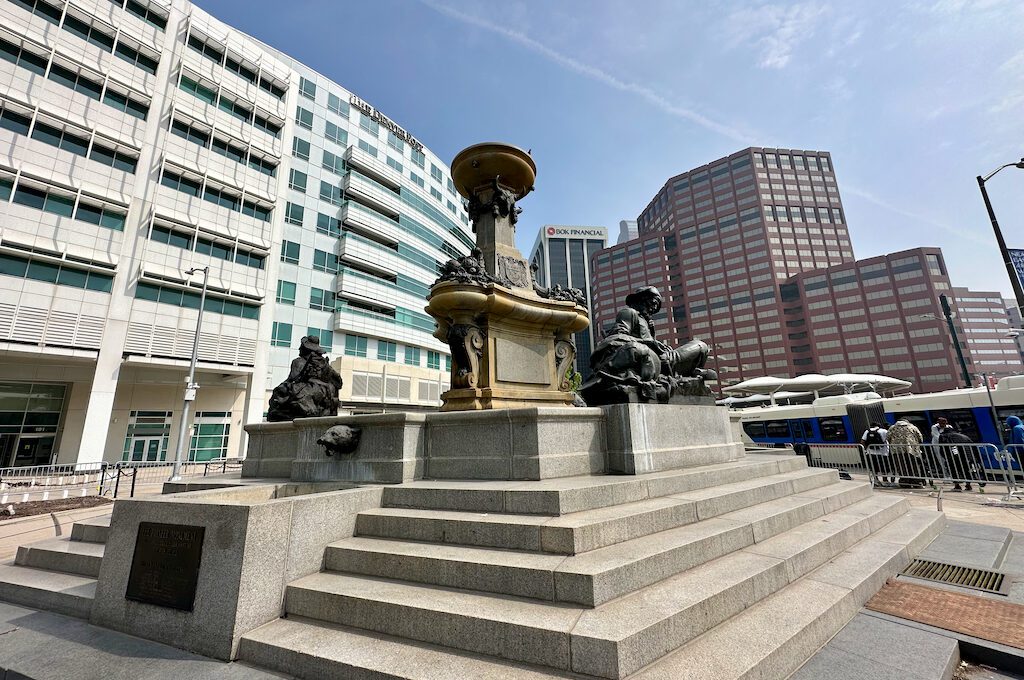
As we made our way back into the park from the Pioneer Monument, we found ourselves surrounded by a collection of captivating monuments and memorials, each telling its own unique story.
Among them, the striking presence of the 10 Commandments monument. It’s allowed on government grounds because it’s not meant to endorse a religion but to represent a cornerstone of the American legal system.
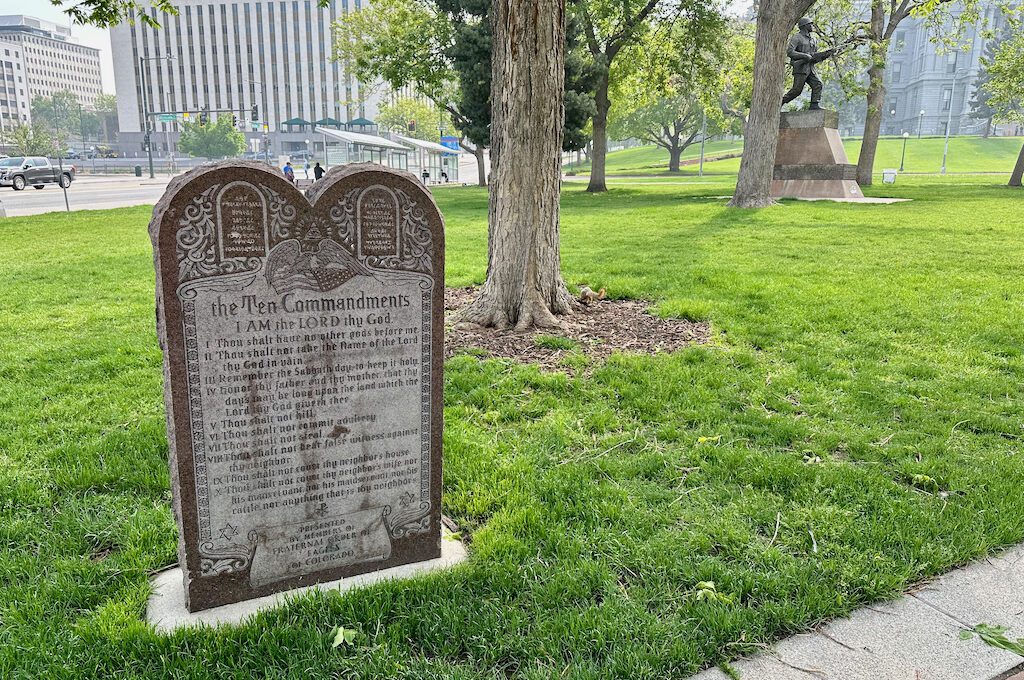
Another notable memorial we encountered was dedicated to Joe Martinez, a true hero and Colorado’s first recipient of the Congressional Medal of Honor.
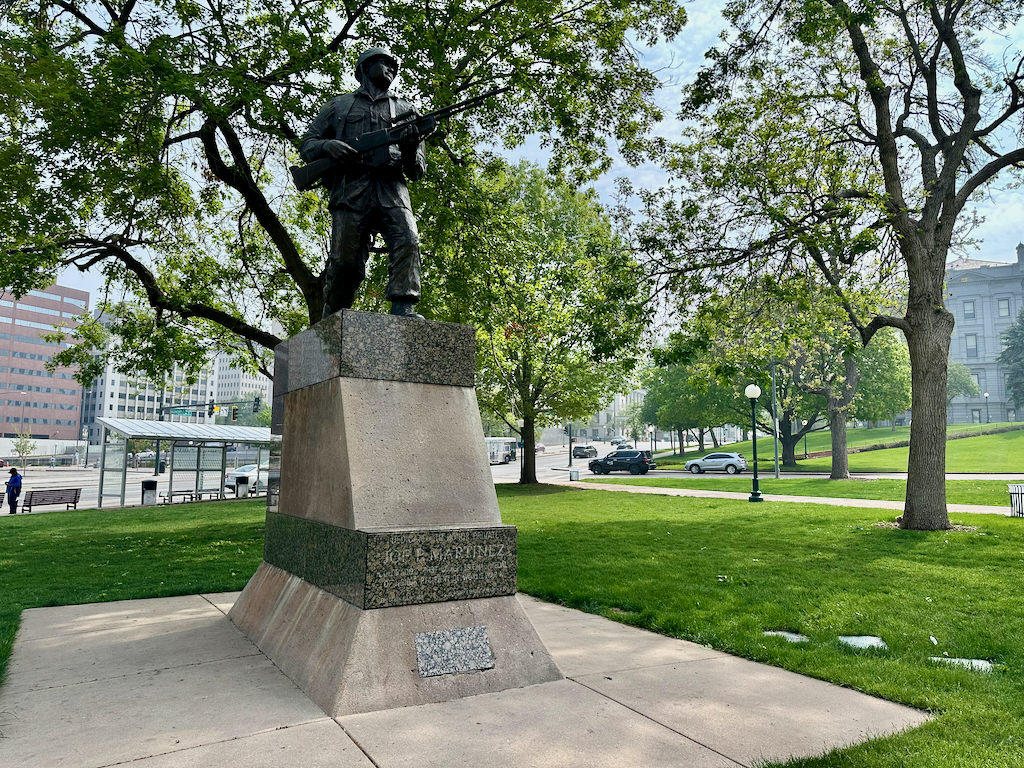
Moving forward, we came across a memorial honoring Major General Maurice Rose, a remarkable figure in American military history. Hailing from Denver, Major General Rose held the distinguished title of being the most decorated armored battlefield commander in US military history.
Tragically, his life was cut short in Germany, just five weeks before the end of World War II, as he fell victim to enemy fire. His memorial is one of the newest additions to the park, being dedicated in April 2023.
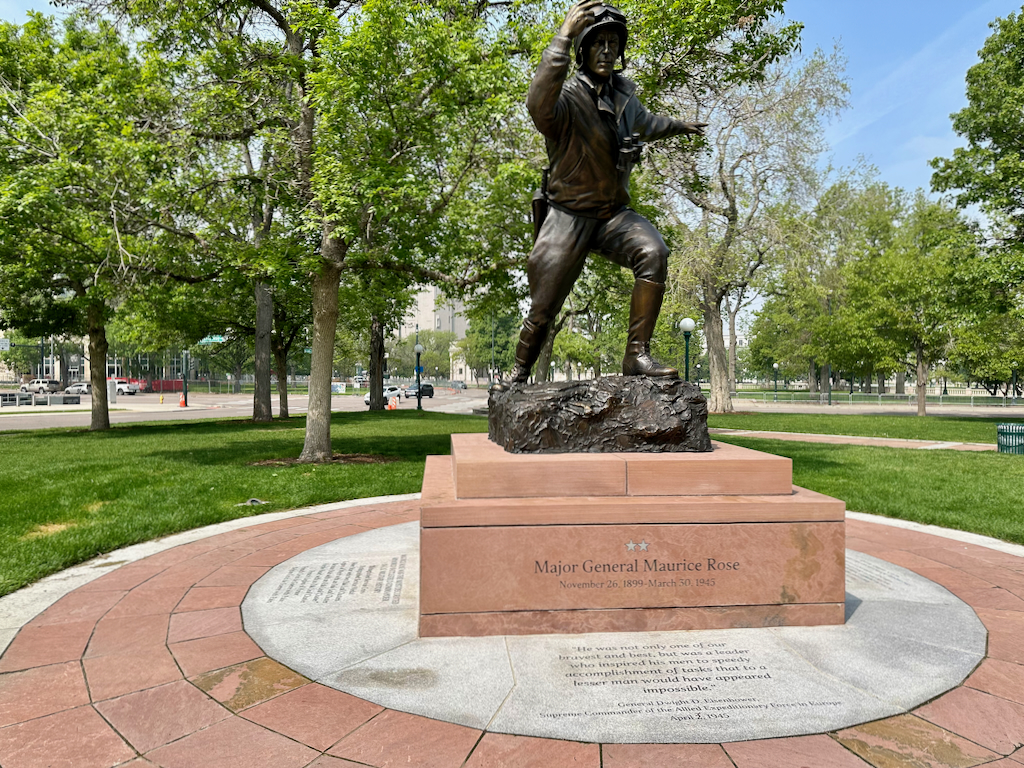
Another must-see is the replica of the Liberty Bell. In 1950, as part of a savings bond campaign, the U.S. Department of the Treasury commissioned the casting of 50+ replicas of the Liberty Bell to represent each state or territory of the United States.
These replicas, weighing approximately 2,000 pounds each, were made from the original mold of the Liberty Bell, so they have the exact dimensions of the original bell. The replicas were distributed across the country and displayed at state capitals, major cities, and historic sites.
The idea was that they would help to promote patriotism, unity, and the importance of savings bonds and today you can find them across the US.
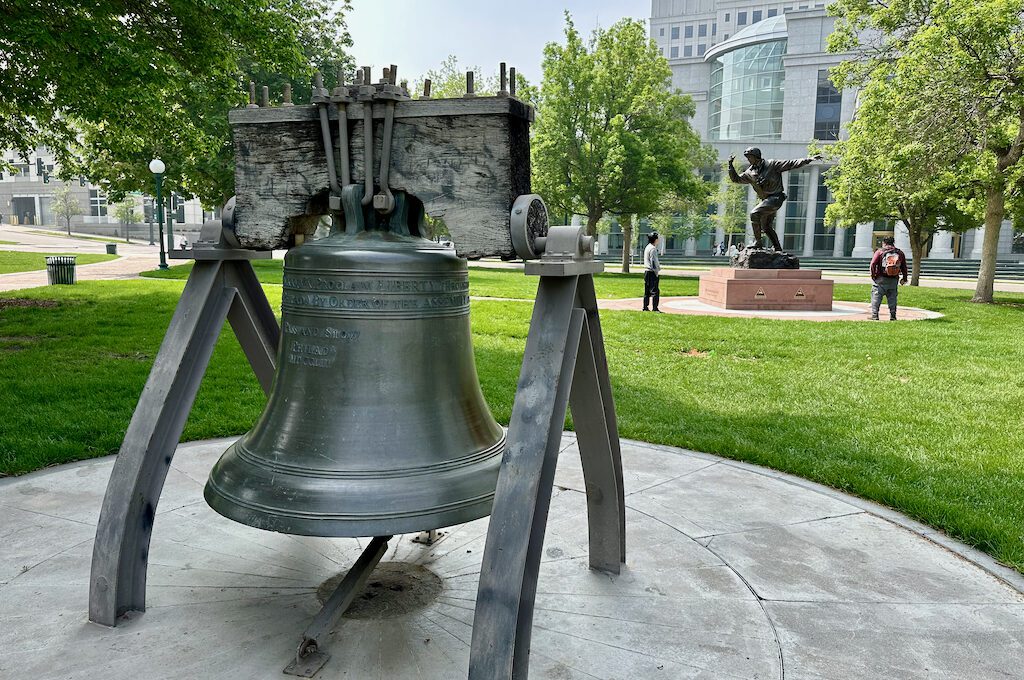
Next we had to take a moment to appreciate the Colorado Fallen Heroes Memorial. Designed by Rosenman Associates Architects, it honors Coloradans killed during 20th and 21st century military conflicts: World War I, World War II, Korean War, Vietnam War, Persian Gulf War, Wars in Afghanistan and Iraq.
You’ll find it right in the middle of the park and it’s hard to miss, located near the giant obelisk designed to honor all branches of the military.
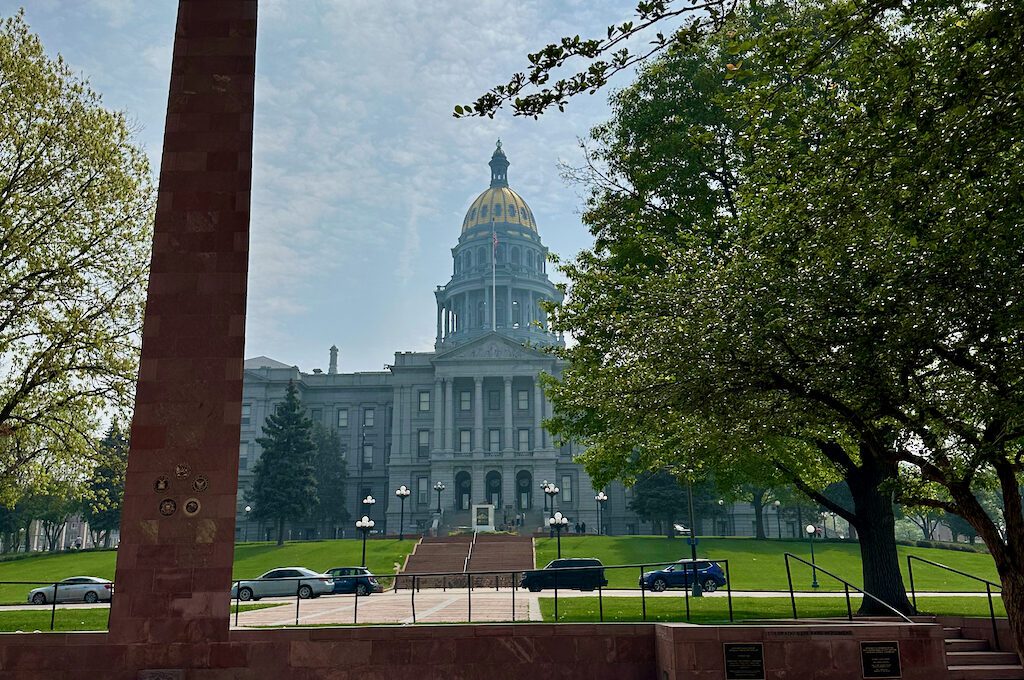
Then it was time to check out the magnificent Colorado State Capitol Building, opened in 1894. It’s a beautiful and unique structure known for its location at exactly 1 mile above sea level.
In fact, a rather famous step on the west side of the building’s entrance is engraved with the marker “One Mile Above Sea Level” and geological marker a few steps above marks the official elevation of Denver aka the “Mile High City.”
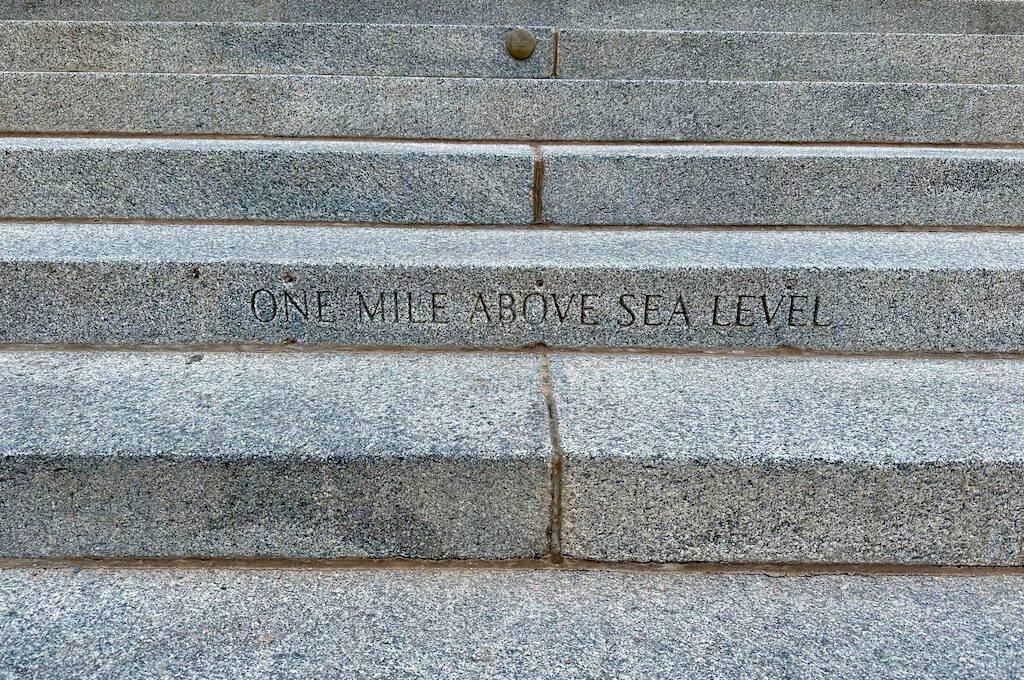
Its architectural design draws inspiration from the United States Capitol in Washington, D.C. and features a prominent Corinthian style. The exterior, crafted from exquisite white granite, exudes elegance.
The shiny dome soars to a height of 272 feet, adorned with copper panels that gleam with the luster of 24-karat gold leaf sourced from a Colorado mine. This golden embellishment, originally added in 1908, serves as a tribute to the historic Colorado Gold Rush.
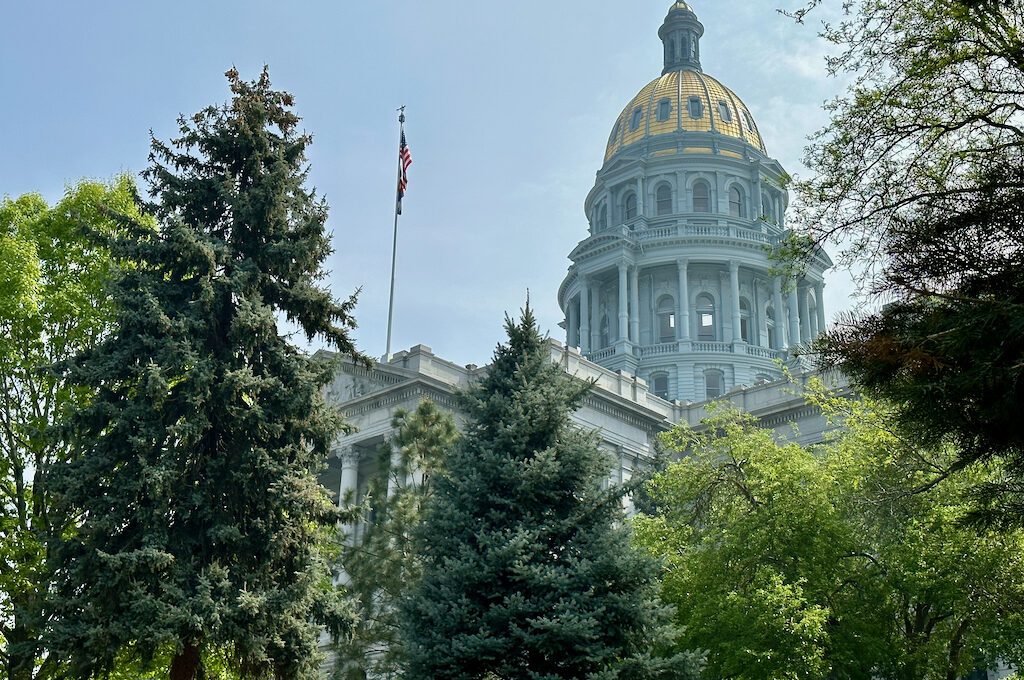
At the forefront of the capital building, lies a site of contention where, in 2020 during the time of the BLM/George Floyd protests, one of the statues was toppled over.
This particular statue depicted a fictional union soldier, intended as a tribute to the Colorado soldiers who valiantly lost their lives fighting on the Union side during the Civil War.
However, some believed the statue had too close of a connection to the Sand Creek massacre. Hence, the toppling.
When the statue was dedicated in 1909, it listed Sand Creek as one of the battles engaged in by the soldiers and therefore did not offer an accurate depiction of the horrific events that took place.
It also was designed by Captain Jack Howland of the Colorado First Cavalry, one of the cavalries that participated in the massacre (although it’s not clear to me if Howland himself participated in the massacre).
A plaque was added in 1999 that explained the prior mischaracterization of listing Sand Creek as a “battle,” in an effort to correct the narrative. However, it has remained a hot-button issue in recent years, highlighting the inherent difficulties we face in grappling with the complex nature of history. Things often aren’t so black and white.
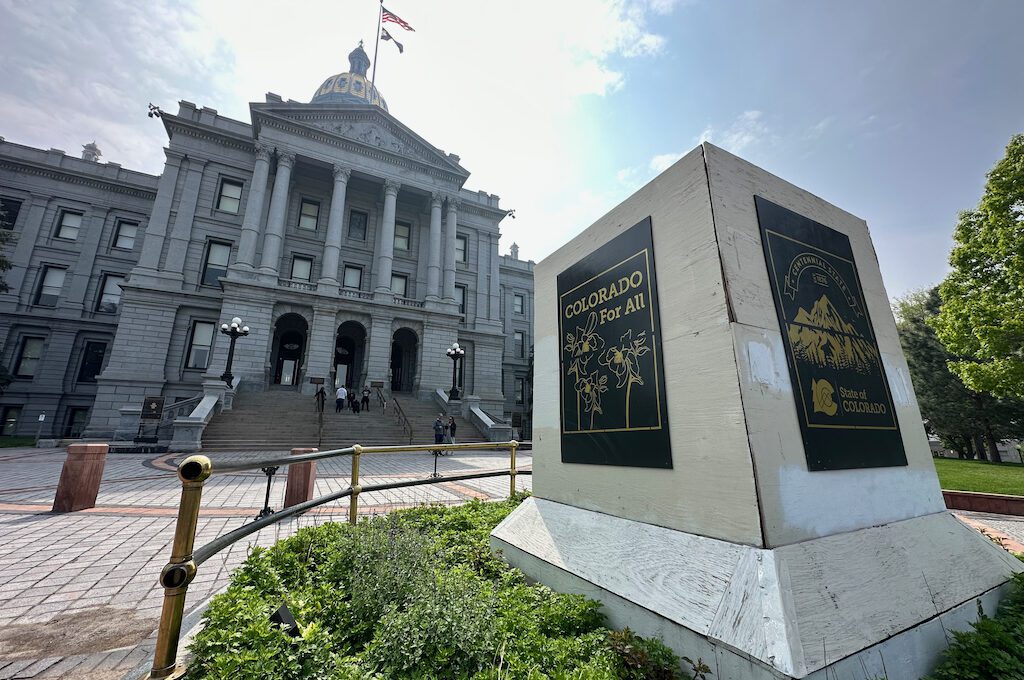
We continued to walk around the Capitol building, checking out the views from each side, including some of its stained glass. Make sure to take a complete stroll so that you can also explore some of the other monuments tucked away on the opposite side, such as those dedicated to Japanese internment camps.
If you’d like to explore the interior of the capitol building, you can go on a free tour during the week.
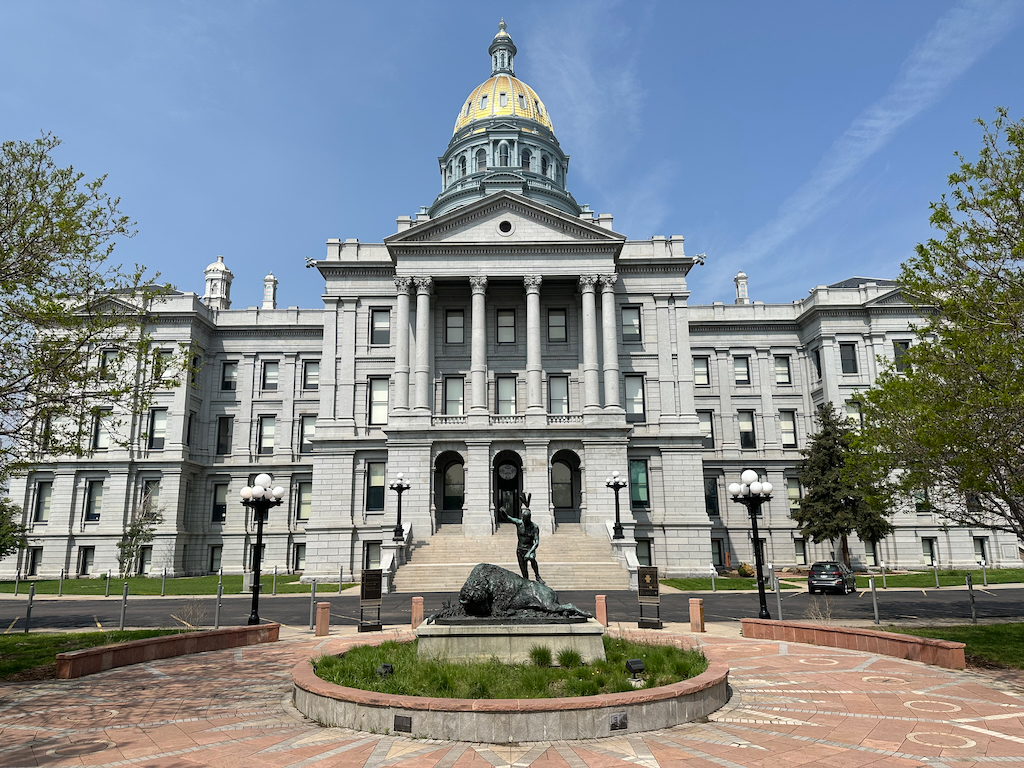
Civic Center Park events
Throughout the year, you can find lots of events taking place at Civic Center Park like the gastronomic adventure of Civic Center EATS.
It’s also a place that often has something going on around holidays. Some of these type of events to look out for include:
- March: St. Patrick’s Day parade culminated at Civic Center.
- April: Flyhi 420 Festival, an annual pro-cannabis rally held on April 20.
- May: Cinco de Mayo festival
- June: People’s Fair, a bohemian festival featuring music, art, political booths, and various activities; PrideFest, the annual gay pride festival
- Summer: the Greek amphitheater within Civic Center becomes the stage for various theater and music events.
- September: A Taste of Colorado, a food and music festival held during Labor Day weekend in the park.
- October: End point of a Columbus Day parade at the park
- December: Parade of Lights culminated at the City and County Building, which remains adorned with holiday lights from the start of the parade until the end of the National Western Stock Show.
Final word
Denver’s Civic Center Park is undoubtedly a destination that should not be missed when visiting Denver.
With its abundance of stunning architecture, captivating historic monuments, and remarkable artwork, the park offers a feast for the eyes. It truly distinguishes itself as one of the better state capitol grounds I have ever come across, presenting an ideal setting for a leisurely exploration on a picturesque summer day in Denver.
Daniel Gillaspia is the Founder of UponArriving.com and the credit card app, WalletFlo. He is a former attorney turned travel expert covering destinations along with TSA, airline, and hotel policies. Since 2014, his content has been featured in publications such as National Geographic, Smithsonian Magazine, and CNBC. Read my bio.

